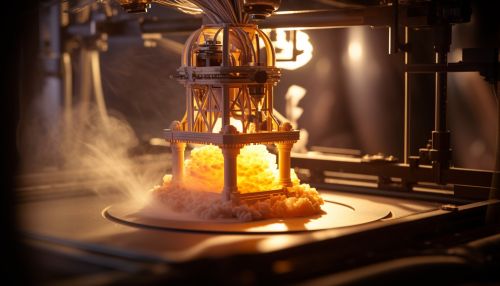The Role of Microscale 3D Printing in Tissue Engineering
Introduction
Microscale 3D printing, also known as microfabrication, is a rapidly evolving technology with significant implications for various fields, including tissue engineering. The ability to fabricate complex, three-dimensional structures with micron-scale resolution enables the creation of tissue constructs that closely mimic the native architecture of human tissues. This article delves into the role of microscale 3D printing in tissue engineering, exploring its potential, challenges, and future prospects.


Microscale 3D Printing: An Overview
Microscale 3D printing is a subset of additive manufacturing technologies that focuses on the creation of structures with features in the micrometer range. This is achieved through various techniques, including stereolithography (SLA), two-photon polymerization (2PP), and digital light processing (DLP), among others. These techniques allow for the precise deposition of materials layer by layer, enabling the creation of complex structures with high resolution and accuracy.
Role in Tissue Engineering
Tissue engineering is a multidisciplinary field that aims to develop functional tissues for the repair or replacement of damaged or diseased human tissues. Microscale 3D printing has emerged as a powerful tool in this field, enabling the fabrication of tissue constructs with intricate architectures and controlled microenvironments that closely mimic the native tissue.
Fabrication of Biomimetic Tissue Constructs
One of the key roles of microscale 3D printing in tissue engineering is the fabrication of biomimetic tissue constructs. These are structures that mimic the architecture and function of native tissues, thereby providing a more physiologically relevant environment for cell growth and tissue formation. Microscale 3D printing allows for the precise control over the spatial distribution of cells and extracellular matrix (ECM) components, enabling the creation of tissue constructs with complex, three-dimensional architectures.
Creation of Controlled Microenvironments
Microscale 3D printing also enables the creation of controlled microenvironments, which are crucial for directing cell behavior and tissue formation. By manipulating the physical and chemical properties of the printed materials, it is possible to create microenvironments that mimic the native tissue, thereby promoting cell adhesion, proliferation, and differentiation.
High-Throughput Screening of Tissue Constructs
Another important role of microscale 3D printing in tissue engineering is in the high-throughput screening of tissue constructs. By enabling the rapid fabrication of a large number of tissue constructs with varying properties, microscale 3D printing allows for the efficient screening of different tissue engineering strategies, thereby accelerating the development of effective therapies.
Challenges and Future Prospects
Despite its potential, the application of microscale 3D printing in tissue engineering also faces several challenges. These include the limited availability of biocompatible printing materials, the difficulty in achieving high cell viability during the printing process, and the challenge of vascularizing the printed tissue constructs.
Looking ahead, the future of microscale 3D printing in tissue engineering is promising. With ongoing advancements in printing technologies and materials, it is expected that microscale 3D printing will continue to play a crucial role in the development of effective tissue engineering therapies.
